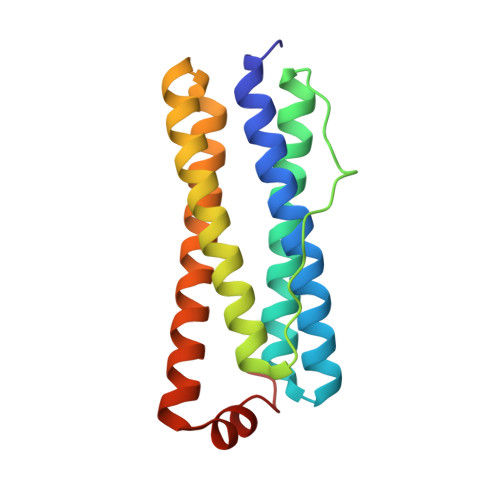The B-type Channel Is a Major Route for Iron Entry into the Ferroxidase Center and Central Cavity of Bacterioferritin.
Wong, S.G., Grigg, J.C., Le Brun, N.E., Moore, G.R., Murphy, M.E., Mauk, A.G.(2015) J Biol Chem 290: 3732-3739
- PubMed: 25512375
- DOI: https://doi.org/10.1074/jbc.M114.623082
- Primary Citation of Related Structures:
4U3G - PubMed Abstract:
Bacterioferritin is a bacterial iron storage and detoxification protein that is capable of forming a ferric oxyhydroxide mineral core within its central cavity. To do this, iron must traverse the bacterioferritin protein shell, which is expected to occur through one or more of the channels through the shell identified by structural studies. The size and negative electrostatic potential of the 24 B-type channels suggest that they could provide a route for iron into bacterioferritin. Residues at the B-type channel (Asn-34, Glu-66, Asp-132, and Asp-139) of E. coli bacterioferritin were substituted to determine if they are important for iron core formation. A significant decrease in the rates of initial oxidation of Fe(II) at the ferroxidase center and subsequent iron mineralization was observed for the D132F variant. The crystal structure of this variant shows that substitution of residue 132 with phenylalanine caused a steric blockage of the B-type channel and no other material structural perturbation. We conclude that the B-type channel is a major route for iron entry into both the ferroxidase center and the iron storage cavity of bacterioferritin.
Organizational Affiliation:
From the Department of Biochemistry and Molecular Biology, the Centre for Blood Research and.















